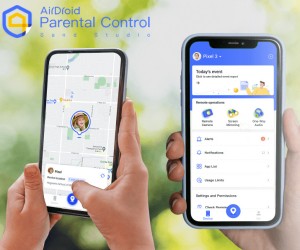N-of-1 Trials in Observe
To indicate you an instance of this system in apply, I’ll conduct my very own evaluation on a number of knowledge collected from my Whoop strap from April twenty seventh, 2018 to October fifth, 2019. Our analysis query for this N-of-1 examine is:
Does consuming alcohol result in poor sleep?
As an athlete and epidemiologist, I’m very conscious of how detrimental alcohol may be in your sleep, athletic efficiency and common wellbeing. I’ve consistently been informed how athletes mustn’t drink, nonetheless its one factor to be informed, however one other to see the proof for your self. As soon as I began sporting my Whoop I observed how my sleep rating (a metric calculated by the Whoop app) would endure after consuming alcohol. Generally even a day later, I assumed I may nonetheless see the impact. These observations made me wish to do my very own evaluation, which I can lastly full now.
Notes on the Knowledge
The 2 variables of curiosity in our evaluation is sleep efficiency rating and alcohol consumption. Sleep efficiency rating ranges from 0 to 100 and is a metric calculated by the Whoop app from biometric knowledge like respiratory charge, gentle sleep length, gradual wave sleep length, and REM sleep length.
The alcohol consumption variable is the response to the query “Did you could have any alcoholic drinks yesterday?” that’s responded to by Whoop customers every day upon waking up. I at all times answered these questions honestly and persistently, though we’re restricted in our knowledge in that the app doesn’t ask questions on how a lot alcohol was consumed. Because of this all ranges of alcohol consumption are handled equally, which eliminates the chance to investigate the connection on a deeper degree. There was some lacking knowledge in our alcohol characteristic, however this lacking info was imputed with ‘No’s as I do know from private expertise that if I had drunk the night time earlier than I used to be positive to mark it within the app.
Exploratory Knowledge Evaluation
Step one in any evaluation is to do some exploratory knowledge evaluation (EDA). That is simply to get a common thought of what our knowledge appears to be like like, and to create a visible that can assist direct our investigation.
From the above box-plots, we see that common sleep rating seems to be increased when no alcohol was consumed, and to have a narrower distribution. Curiously, there appears to be extra outliers in sleep efficiency rating when alcohol will not be consumed. Maybe journey days and jet-lag can account for these outliers, as I traveled abroad 5 occasions throughout this pattern interval.
Now that now we have gotten a very good first have a look at the information of curiosity, its time to dig into the statistical evaluation.
Speculation Testing
To reply our analysis query, I might be conducting speculation testing. Speculation testing is a statistical method that permits us to make inferences a few inhabitants primarily based on some pattern knowledge. On this case, we are trying to deduce if me consuming alcohol is related to having poor sleep that night time. We don’t have knowledge on alcohol consumption and sleep for each night time I’ve been alive, so we examine our pattern knowledge as a proxy.
Step one in speculation testing is to formulate my hypotheses. A ‘null speculation’ is the idea that nothing attention-grabbing is going on or that there is no such thing as a relationship or impact. In our case the null speculation is: There is no such thing as a distinction in imply sleep efficiency between nights by which alcohol was consumed and was not consumed.
An ‘various speculation’ is the speculation that contradicts the null, and claims that the truth is there’s something attention-grabbing taking place. In our instance the various speculation is: There’s a distinction in imply sleep efficiency between nights by which alcohol was consumed and was not consumed.
Selecting a Statistical Take a look at
To evaluate which of those hypotheses is true, now we have to selected a statistical check. We’re curious if the typical sleep rating for nights by which I drank alcohol is totally different from the typical sleep rating for nights by which I didn’t drink alcohol, and so might be utilizing a distinction in means to check this. Particularly, our check statistic is: Imply sleep efficiency with no alcohol — Imply sleep efficiency with alcohol
Now that now we have outlined our framework, we will use R to calculate our check statistic and consider our hypotheses.
Conducting our Evaluation in R
From our pattern knowledge we will calculate our noticed check statistic. The code in R is included under.
test_stat <- knowledge |>
specify(system = sleep_performance ~ alcohol) |>
calculate(
stat = "diff in means",
order = c("No", "Sure")
)Our check statistic is 8.01. This quantity signifies that the typical sleep rating for nights by which I consumed no alcohol is 8.01 factors increased than nights by which I did eat alcohol.
The following step within the evaluation is to generate a null distribution from our pattern knowledge. A null distribution represents all of the totally different values of check statistic we’d observe if samples have been drawn repeatedly from the inhabitants. The distribution is supposed to replicate the variation within the check statistic purely because of random sampling. The null distribution is created in R under:
set.seed(42) #Setting seed for reproducibilitynull_distribution <- knowledge |>
specify(system = sleep_performance ~ alcohol) |>
hypothesize(null = "independence") |>
generate(reps = 1000, kind = "permute") |>
calculate(
stat = "diff in means",
order = c("No", "Sure")
)
What we’re doing above is taking samples with alternative from our knowledge, and calculating the distinction in means from these samples. We do that 1000 occasions to generate a big sufficient distribution in order that we will decide if our noticed check statistic is critical.
After now we have our null distribution and check statistic, we will calculate a two-sided p-value for an alpha of 0.05. The p-value may be regarded as the likelihood of getting a check statistic that’s as excessive or greater than our noticed check statistic if the null speculation is true. Put into plain phrases; it represents how doubtless it will be to see this outcome if there was no true affiliation. We calculate a two-sided p-value in R under, as we’re enthusiastic about the potential for the check statistic being better or lesser than anticipated.
p_value <- null_distribution|>
get_p_value(test_stat, path = "each")Our p-value is 0.017 which signifies that our discovering is critical on the alpha=0.05 degree, which is a generally accepted degree of significance in statistics. It signifies that the distinction in sleep rating we discovered was important! Now we have the proof to reject the null speculation and settle for the choice; there is a distinction in imply sleep efficiency between nights by which alcohol was consumed and was not consumed.
I’ve included a useful visualization of the null distribution, check statistic, and 95% quantile vary under. The gray bars are the various attainable check statistics calculated from our 1000 samples, and the orange line represents the density of those values. The blue dashed strains characterize the 97.fifth and a couple of.fifth quantiles of this distribution, past which our check statistic (in purple) is proven to be important.
Remaining Conclusions
Effectively, it seems my coaches have been proper all alongside! Our evaluation discovered that my common sleep rating after I didn’t eat alcohol was 8.01 factors increased than my common sleep rating after I did eat alcohol. This distinction was discovered to be statistically important, with a p-value of 0.017, that means that we reject the null speculation in favor of the choice. This statistical outcome backs up my private expertise, giving me a quantitative outcome that I can trust in.
Going Additional
Now that I’ve this preliminary evaluation below my belt, I can discover extra associations in my knowledge, and even use extra sophisticated strategies like forecasting and machine studying fashions.
This evaluation is a really fundamental instance of an N-of-1 examine, and isn’t with out limitations. My examine was observational moderately than experimental, and we can’t declare causality, as there are lots of different confounding variables not measured by my Whoop. If I needed to discover a causal relationship, I must rigorously design a examine, file knowledge on all attainable confounders, and discover a technique to blind myself to the therapy. N-of-1 research are laborious to do exterior of a scientific setting, nonetheless we will nonetheless discover significant associations and relationships by asking easy questions of our knowledge.
I hope that after this tutorial you are taking the initiative to obtain your individual knowledge from no matter health tracker you may get your arms on, and mess around with it. I do know everybody can provide you with a speculation about how some variable impacts their well being, however what most individuals don’t understand, is that you simply’re nearer to getting a quantifiable reply to that query than you suppose.
References and Additional Studying
[1] Davidson, Okay., Cheung, Okay., Friel, C., & Suls, J. (2022). Introducing Knowledge Sciences to N-of-1 Designs, Statistics, Use-Circumstances, the Future, and the Moniker ‘N-of-1’ Trial. Harvard Knowledge Science Evaluation, (Particular Concern 3). https://doi.org/10.1162/99608f92.116c43fe
[2] Lillie EO, Patay B, Diamant J, Issell B, Topol EJ, Schork NJ. The n-of-1 scientific trial: the final word technique for individualizing drugs? Per Med. 2011 Mar;8(2):161–173. doi: 10.2217/pme.11.7. PMID: 21695041; PMCID: PMC3118090.
[3] Daza EJ. Causal Evaluation of Self-tracked Time Sequence Knowledge Utilizing a Counterfactual Framework for N-of-1 Trials. Strategies Inf Med. 2018 Feb;57(1):e10-e21. doi: 10.3414/ME16–02–0044. Epub 2018 Apr 5. PMID: 29621835; PMCID: PMC6087468.
[4] Schork, N. Personalised drugs: Time for one-person trials. Nature 520, 609–611 (2015). https://doi.org/10.1038/520609a




